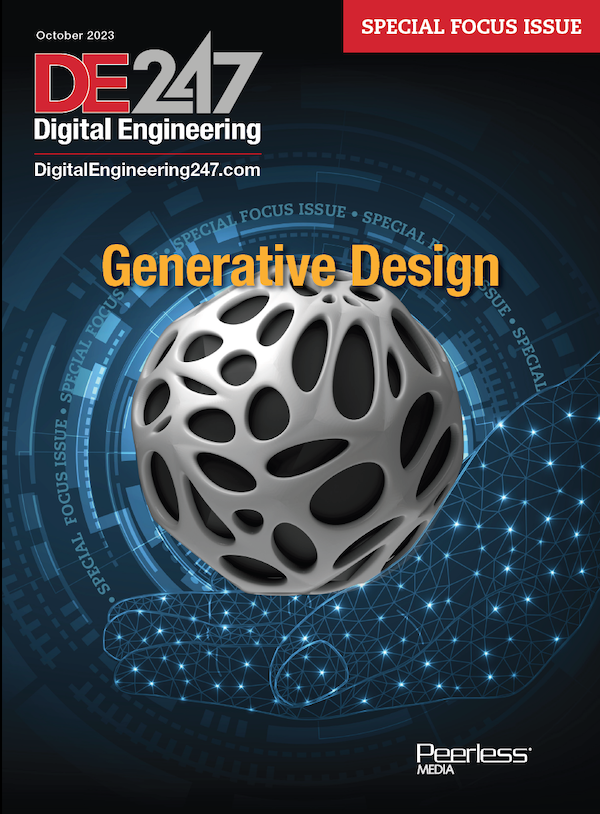Shift Left to Get Ready for AI
In software development, there’s a concept called “shift left.” When a project shifts left, it involves other resources much earlier in the project.
Latest News
November 1, 2018
In software development, there’s a concept called “shift left.” Typically, all of the testing happens at the right side of the Gantt chart or project plan, toward the end of the planning process. When a project shifts left, it involves other resources much earlier in the project, to test the user experience, functionality, connection to other apps and everything else that encompasses making that piece of software hum. Shifting left lets the team identify flaws and opportunities to enhance the product while there’s still time to act. Go too far to the right, and there’s not enough time before release to affect change.

Our manufacturing world can shift left, too, if we, as a part of manufacturing, rethink traditional processes. This means we start strong, with a great concept—let’s run that concept through focus groups and also have manufacturing tell us if they can make it at cost estimates. Then, as we add detail, we can simulate product use and feed that back into the design. These iterations start us shifting left. What we need to get away from is a focus on the creation and concept phase that doesn’t even consider validation before too late.
But we can shift even further to the left by taking advantage of the tools entering the market today to help us. Yes, some of this is at the bleeding edge, but at most it will only cost time and money for training, some CPU cycles and access to trial software. Then, you’re off on a game-changing adventure.
Generative Design
One of the “shift left” tools getting a lot of buzz now is generative design: the overall descriptor for a bucket of tools that can mean geometry optimization or other compute-enabled tools that make a design more fit for its purpose. Geometry optimization is a combination of CAD and CAE, where a user sketches out a design and defines its loads and constraints. Then the optimizer takes over, morphing the base design to offer one or more alternatives that are lighter and stronger, often in a more organic, elegant-looking shape. The user then works with that shape to create the final design.
The automotive and aerospace industries often use shape optimization for lightweighting, but many other sectors use this technology to redesign parts for additive manufacturing. In both cases, the computer can calculate options that humans might not consider, and devise many alternatives faster than our poor brains can.
These tools aren’t, however, limited to geometry. What if you could use compute power to crank through combinations of suppliers’ pricing and delivery schedules to determine which combination is best for your purpose? Or to work out which of your production facilities is best suited, from the perspective of location and equipment availability, to manufacture your parts? Or you might scan through potential materials for regulatory compliance, availability and cost. This type of optimization is being commercialized, but needs ties from design into business intelligence; it’s not as simple as geometry.
Connecting the Digital Thread
And then there’s the Holy Grail: feeding operating data from existing products in the marketplace back into design. If you have assets already in operation, wouldn’t it be great to know how your customers are using them? Real data helps make that next design all the better, but it’s locked in a data historian. How can you turn those gigabytes into something of use?
These are all examples of artificial intelligence (AI), which is the intersection of data science and compute power, applied to real-world cases. Computers playing chess is interesting, but the real benefits of AI are in making businesses more agile and profitable.
How can you get ready for AI? Look at your design process for places where analytics could have a real impact. That’s early, to the left. Explore the data you might need—what, from where, how verified, for what purpose—and how you will integrate it into your design. Look at your favorite vendor’s current offering around generative design today and ask them about their AI plans. Be a beta tester, to get early visibility—remember, all it can do is suggest; you are still in charge of your design. Above all, be open to letting the machine do some work for you. You have unique human, irreplaceable skills that you can make even stronger by the intelligent application of some of these technologies.
Subscribe to our FREE magazine, FREE email newsletters or both!
Latest News
About the Author
Monica Schnitger is the founder, president and principal analyst of Schnitger Corporation. She has developed industry forecasts, market models and market statistics for the CAD/CAM,CAE, PLM, GIS, infrastructure and architectural / engineering / construction and plant design software markets since 1999.
Follow DE





